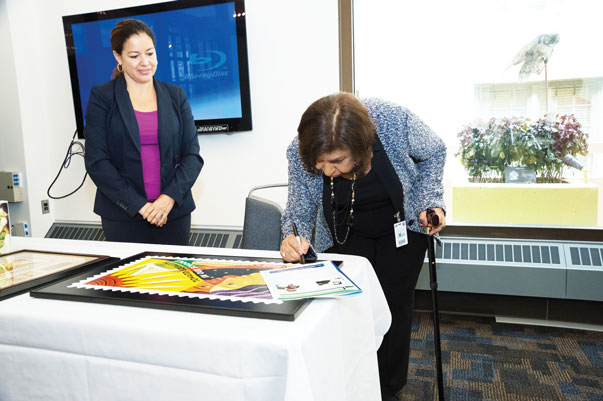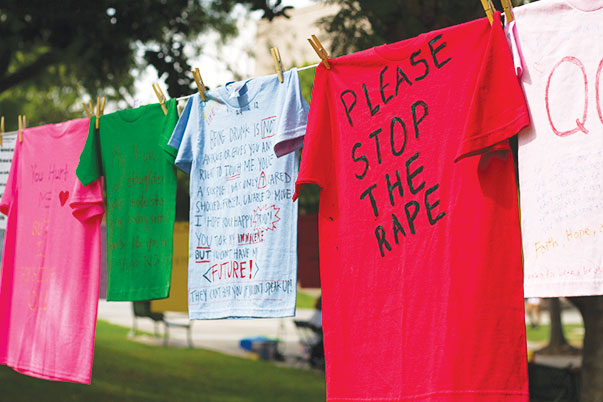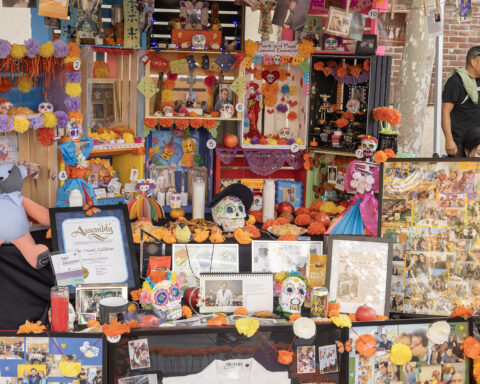
By Laura Garcia
Sandra Robbie already had her own children by the time she learned about a landmark education court case that was omitted from California’s history books.
“I was angry, I was embarrassed, I was ashamed,” said Robbie. “And then I was excited to learn that somebody like my family and my friends and people from diverse communities came together to make a difference that not just changed their community but changed our nation.”
Robbie found her life’s calling in Mendez v. Westminster, a now 70-year-old Orange County court ruling that ended school segregation in California. Eventually, the Supreme Court would cite the case as a precedent to vote in favor of ending racial segregation in classrooms across the nation.
Never having directed, produced nor written a documentary film, Robbie set out to tell the nation about a significant civil rights story that was in danger of becoming a footnote. And with the help of Sylvia Mendez, the daughter of the plaintiffs in the case, she’s doing just that.
A Santa Ana College alumna, Robbie wrote, produced and directed the Emmy Award-winning For All the Children (Para Todos Los Ninos), a PBS documentary about the case that started the end of racially segregated classrooms. She’s tirelessly advocated for including the story behind this case in California’s history textbooks.
In 1945, 8-year-old Sylvia Mendez and her two brothers were denied enrollment in the Westminster School District because of a “whites only” policy. Sylvia’s lighter-skinned cousins with a different surname got in. Four other families would face the same rejection.
With the help of civil rights attorney David Marcus, the Mendez, Guzman, Estrada, Palomino and Ramirez families’ sued the Westminster, Garden Grove, Santa Ana and El Modena school districts, claiming discrimination for their children and 5,000 others.
The Garden Grove School District’s witnesses testified during the trial that Mexican American children were inferior and could not speak English. The plaintiff’s attorneys on the Mendez side of the case, led by Marcus, argued that Spanish-speaking students were hindered from learning English because of segregation, and by the requirement that they attend separate schools that in fact were poorly staffed and lacking in resources.
In February 1946, Judge Paul J. McCormick ruled in favor of the families, desegregating all schools in Orange County.
During that same time period, Native Americans, Japanese, Chinese or Mongolian students were the only groups that could by state law be legally segregated from schools.
There had been no specific law regarding Mexican or African-American children, whose exclusion was a matter of practice. One year after the Mendez v. Westminster case, California Gov. Earl Warren, (who would later become a U.S. Supreme Court Justice), also ended segregation for American-Indian and Asian children, making California the first state to be completely integrated.
Whether the law called for it or not, Robbie saw something in the past to unify the American experience of living as a person of color.
“We talk about black history. We talk about Latino history. We talk about Asian history. We talk about it as if our lives don’t connect with each other and in Mendez, it just blows everything apart to show that we are absolutely connected,” Robbie said.
Like Robbie, Sylvia Mendez says the fight is not over.
“When we went to court they were saying the reason they didn’t want us in a white school was because we were dirty, immoral. And now we have someone who’s running for president who’s saying the same thing,” Mendez said.
Sylvia, 79, remembers conversations she had with her parents, Gonzalo and Felicitas Mendez. They would tell her of how restaurants refused to serve them, of having to sit in the balconies of movie theatres and of avoiding public parks where they weren’t welcome.
Her parents protected young Sylvia from facing discrimination for as long as they could.
“What happened was that I didn’t realize what they were fighting for,” Mendez said.
It wasn’t until after the court decision, when she was 10, that she first felt discriminated against when she was verbally abused by a boy after her father moved her to an all-white school. She remembers going home crying because the boy told her that Mexicans didn’t belong at a school with whites.
“Don’t you realize that’s what we were fighting all those years?” her mother asked.
Sylvia introduced legislation in Sacramento to include the case into California’s school textbooks but it was vetoed by then Gov. Arnold Schwarzenegger. As a result, Sylvia continues to visit schools in different states at least three times a week educating students about the history of the Mendez case.
For her efforts, President Barack Obama awarded Sylvia Mendez the Presidential Medal of Freedom in 2010.
“It was just ordinary farmers that had not even finished high school that stood up against the establishment and were able to win. If you see an injustice, there is no reason why we can’t fight it. We just join together and fight it,” said Mendez.
Mendez has lived long enough to witness her parents’ legacy and that of four other families over the last 70 years since a lawsuit gave children of color access to the same education as white students.
Last month, a sculpture of Lorenzo A. Ramirez was installed at Santiago Canyon College. Lorenzo and his wife Josefina joined the suit after their three sons were denied at Roosevelt, a white school in El Modena. “We live in a country where everyone is equal,” Ramirez told the court at the time.
In 2000, Santa Ana Unified School District opened Mendez Fundamental Intermediate School, on Bristol and 17th streets, in honor of Gonzalo and Felicitas Mendez.
Robbie recently began the OC PeaceRide, a tour around Old Towne Orange that revisits Orange County’s segregated history. Riding in a former Disneyland trolley, passengers travel past an old movie theatre where Mexicans sat in the balcony while whites sat below, and a public pool where the only day they were allowed to swim was Monday and the pool was cleaned before whites went in. The tour also takes place in several other locations, including a cemetery, the former packing house, and a spot at the nearby Chapman University campus where Martin Luther King Jr. once gave a speech.
“When I learned about Mendez, so many of life’s truths became apparent to me, and one of the things was, the truth is that history takes time,” Robbie said.
- Inside el Don’s 2025 Immigration Issue - October 14, 2025
- Talk to us! We’re community reporters - October 14, 2025
- Local punk scene provides support during ICE raids - July 17, 2025












